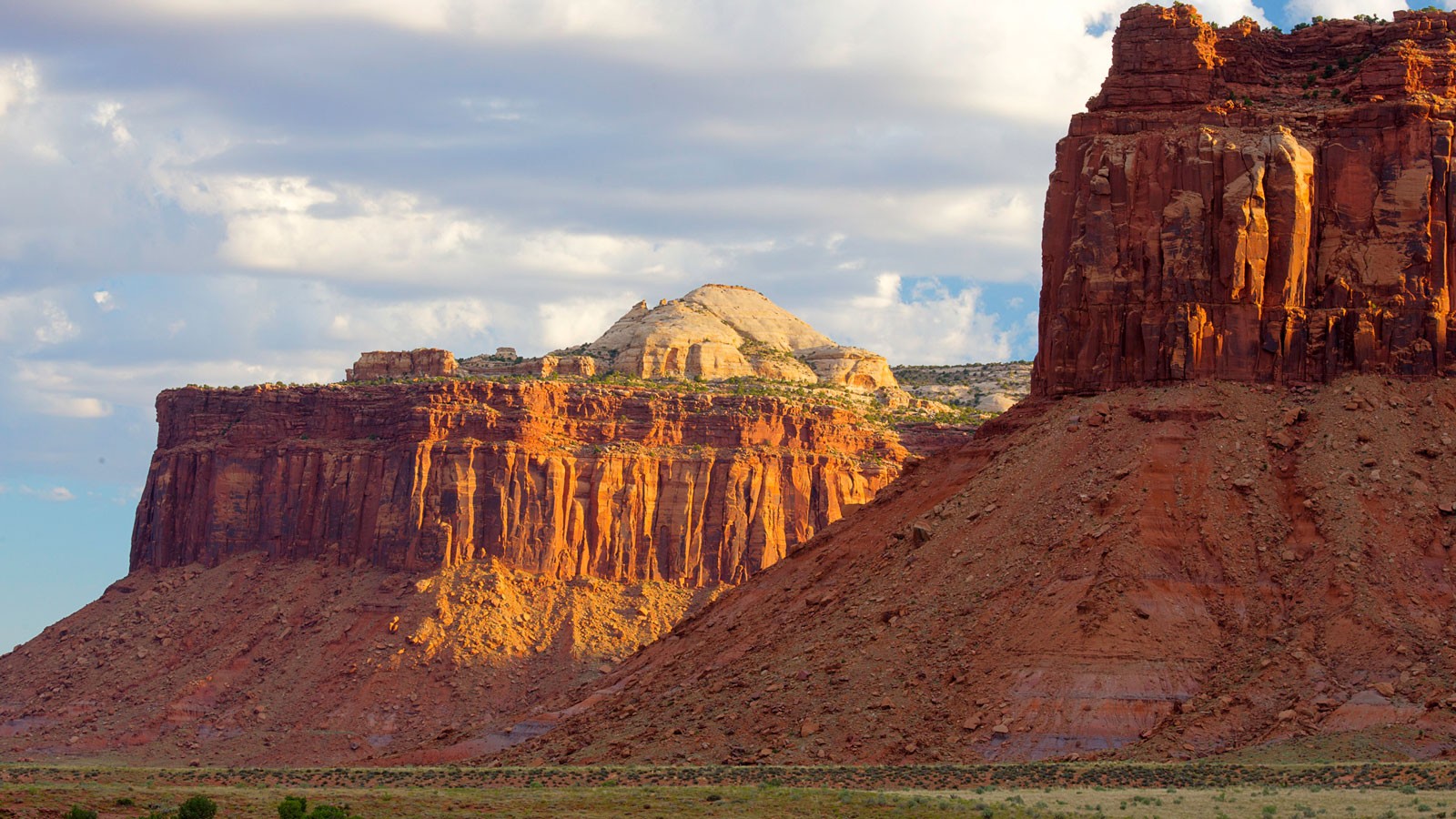Finding Footing at Bear Ears: Selecting a Site for a National Monument Cultural Center
By Lisa Stoner |
Researchers from the Institute of Outdoor Recreation and Tourism have been tasked with identifying potential sites for a new cultural center for the Bear Ears National Monument. (Photo Credit BLM/Bob Wick)
Take a delicate, remote red-rock desert and gather thousands of visitors per day — but do it in a sustainable and respectful way. And, of course, make it convenient.
It’s not an easy task to manage visitors at any protected natural location, but selecting a site for a cultural center at Bears Ears National Monument has extra challenges. For instance, what values should planners prioritize when choosing a site to build? Easiest access from nearby cities? The best views? The values tribes most want to communicate to visitors?
Researchers from the Institute of Outdoor Recreation and Tourism (IORT) in the Quinney College of Natural Resources were tasked with reporting on the potential sites for a cultural center for the National Monument, an effort to support decisions left to the Bears Ears Inter-Tribal Coalition, a consortium of tribal nations working to conserve the Bears Ears cultural landscape.
“The cultural center at Bears Ears National Monument, when well planned, could serve as an anchor destination through which people could learn about, experience and appreciate the cultures, histories and landscapes that define southeastern Utah,” said Jordan Smith, director of IORT and lead author on the report. “It also holds the potential to bolster the regional economy by signaling a long-term investment in the sustainability of the region’s outdoor recreation and tourism industry.”
Following the establishment of the Bears Ears National Monument in 2016, the far southeastern corner of Utah experienced a surge of outdoor recreationists and tourists, but it lacks a formal visitor or cultural center offering information on the area’s history and cultures. As part of the siting analysis, the research team focused on a balance between cultural, environmental and economic factors to pinpoint sites where a cultural center might be best located.
Depending on how each of the factors was weighted, several possible locations emerged with varying potential. Of the five major road segments that cross into the monument, the most heavily used route by non-locals was the southern entrance coming in from Monument Valley and Mexican Hat on State Route 163, according to the report — on average more than a thousand trips by visitors per day.
The team examined private and state lands near major routes that crossed into the monument. They suggested building a cultural center in a location easily accessible to outdoor recreationists and tourists, and near existing municipalities that could offer restaurants and lodging facilities. When all factors were weighted equally, several likely locations were identified, including areas near the town of Bluff, south and west of Blanding, and west of Monticello.
Each potential siting location has advantages and disadvantages, Smith said, but the decision ultimately rests with the Inter-Tribal Coalition. The cultural center, when well placed and well planned, will serve as a foundation for a recreation destination well designed to serve the community, visitors, and the place it is meant to protect, Smith said.
WRITER
Lisa Stoner
Assistant Director of Outreach and Education
Institute of Outdoor Recreation and Tourism
lisa.stoner@usu.edu
TOPICS
Utah 371stories Land Management 123stories Outdoor 79stories Recreation 69storiesComments and questions regarding this article may be directed to the contact person listed on this page.







